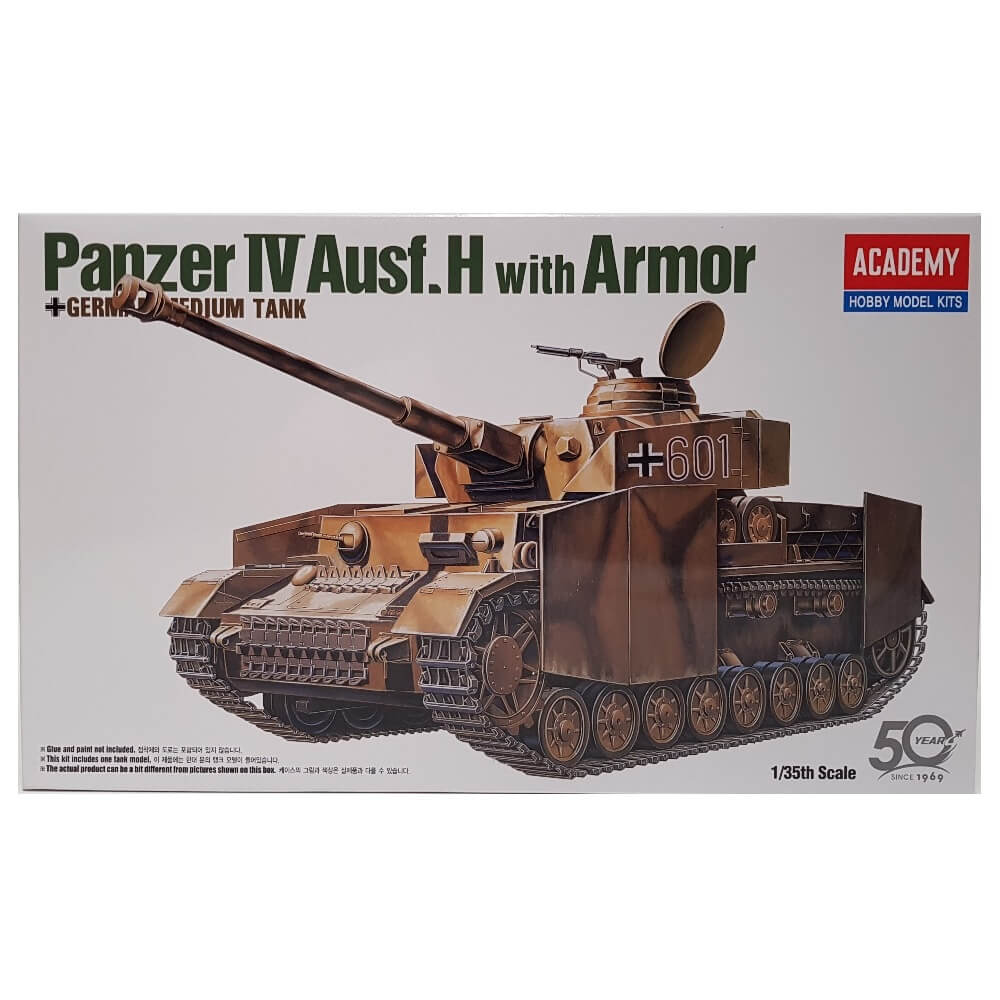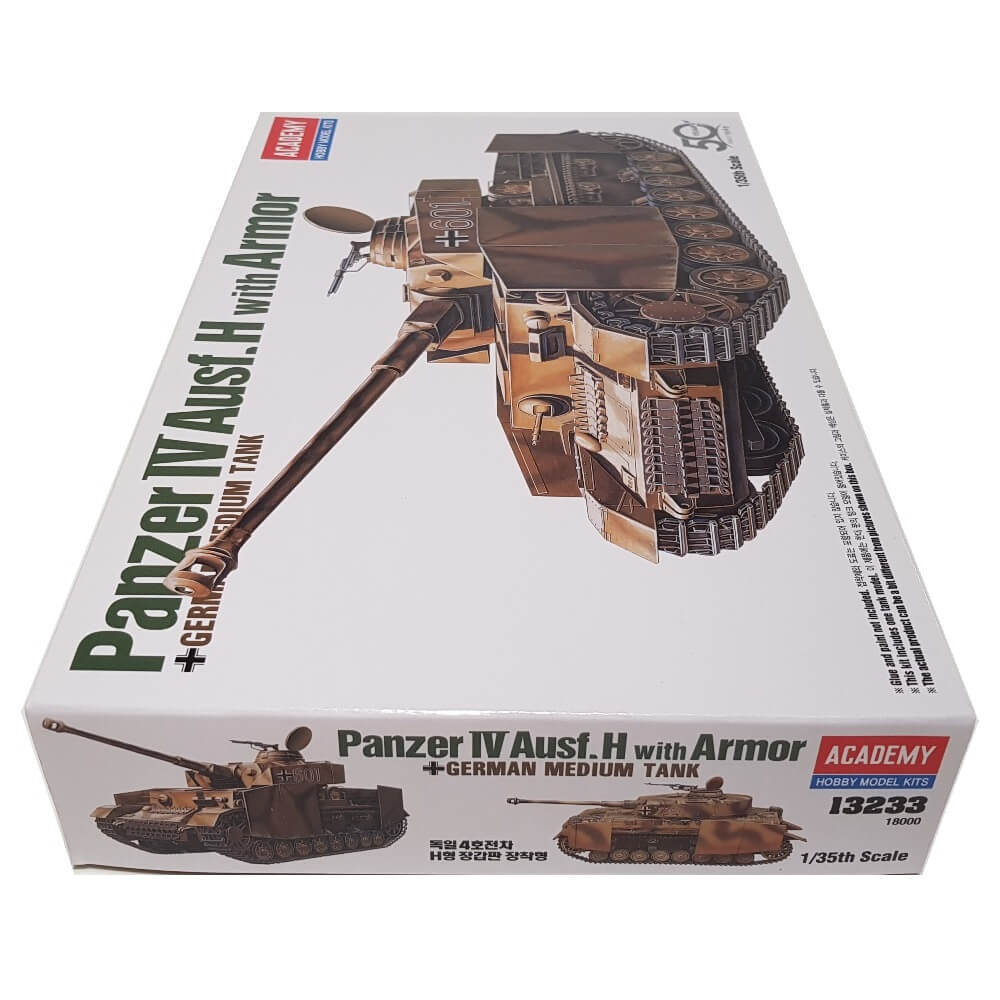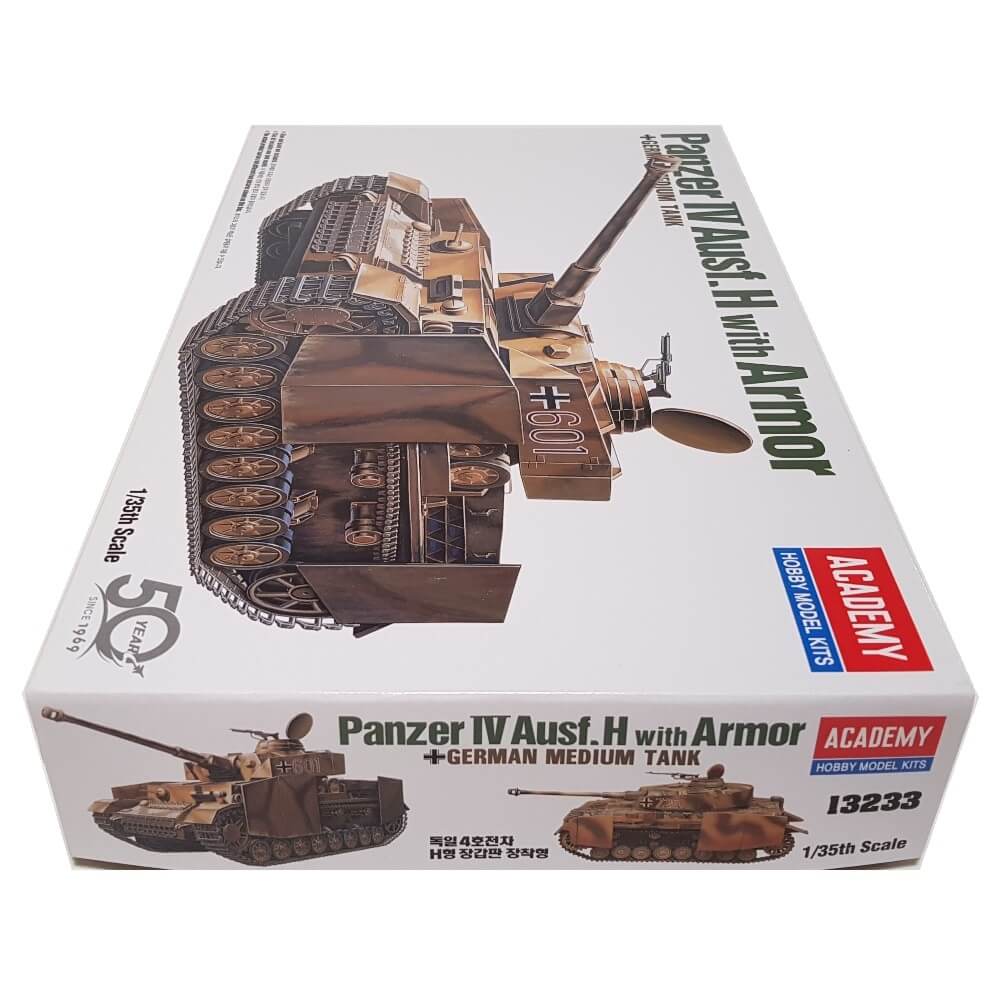ACADEMY : 13233
1:35 German PANZER IV Ausf. H with Armor - ACADEMY
1:35 German PANZER IV Ausf. H with Armor - ACADEMY
Couldn't load pickup availability
The Panzerkampfwagen IV (PzKpfw IV), commonly known as the Panzer IV, was a German medium tank developed in the late 1930s and used extensively during the Second World War. Its ordnance inventory designation was Sd.Kfz. 161.
The next version, the Ausf. H, began production in June 1943 and received the designation Sd. Kfz. 161/2. The integrity of the glacis armor was improved by manufacturing it as a single 80-millimetre plate. A reinforced final drive with higher gear ratios was introduced. To prevent adhesion of magnetic anti-tank mines, which the Germans feared would be used in large numbers by the Allies, Zimmerit paste was added to all the vertical surfaces of the tank's armor. The turret roof was reinforced from 10-millimetre to 16-millimetre and 25-millimetre segments. The vehicle's side and turret were further protected by the addition of 5-millimetre hull skirts and 8-millimetre turret skirts. This resulted in the elimination of the vision ports located on the hull side, as the skirts obstructed their view. During the Ausf. H's production run, its rubber-tired return rollers were replaced with cast steel, a lighter cast front sprocket and rear idler wheel gradually replaced the previous components, the hull was fitted with triangular supports for the easily damaged side skirts, the Nebelwurfgeraet was discontinued, and a mount in the turret roof, designed for the Nahverteidigungswaffe, was plugged by a circular armored plate due to initial production shortages of this weapon.
These modifications meant that the tank's weight increased to 25 tonnes. In spite of a new six-speed SSG 77 transmission adopted from the Panzer III, top speed dropped to as low as 16 km/h (10 mph) on cross country terrain. An experimental version of the Ausf H was fitted with a hydrostatic transmission but was not put into production.










